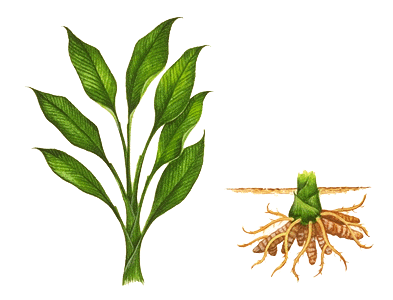Sage is here to help.
Feel like you could be eating better? Not sure what to change or where to look? Sage Nutritious Solutions make it easy for you to discover the wide, wonderful world of balanced, healthy, bangin' food.
Ingredient Spotlight: Turmeric
Turmeric has been used for thousands of years and is a common spice in Southeastern Asian cuisine (especially Indian cuisine). During the 13 century, Marco Polo described the spice as very similar to saffron, but "not really saffron". It provides dishes with a brilliant yellow color, as often seen in curries. Turmeric has even found its way into Western foods, and is commonly used as a natural food coloring for butter and mustard, and as part of the pickling process. It is a mild tasting spice that some describe having hints of pepper, orange, and ginger flavors. The turmeric powder we see in stores comes from the root of the turmeric plant. The plant has finger-like tubes that run underground called rhizomes. These rhizomes are then processed into powder. Turmeric can come in other forms as well, such as tea.

Turmeric has been tested not just in the kitchen but in the laboratory as well, and using turmeric for medicinal reasons goes back centuries. Asian folk medicine traditions use turmeric to treat a myriad of conditions, ranging from diarrhea and colds all the way to parasitic worms. Turmeric is even made into a paste and applied to the skin as a form of cancer therapy in countries such as Malaysia and India. There are claims that this spice reduces inflammation and can even have anti-cancer effects. The specific substance in turmeric that has been studied for these effects is called curcumin, the bioactive ingredient in turmeric. Keep in mind that curcumin and cumin are not related!
Research that supports the anti-cancer effects and anti-inflammatory effects of curcumin has largely been shown in animal testing and laboratory tests. There is not enough evidence to date suggesting curcumin can create these effects in humans. However, it is possibly likely that curcumin can be used to alleviate upset stomach and osteoarthritis, with more evidence supporting these claims compared to other conditions. Although there is a high safety threshold for taking large doses of turmeric or curcmuin, it is vital to consult a physician or registered dietitian before taking supplements of either as they could have an effect on other medications or just not be right for you.Just because it is uncertain whether turmeric is a mean cancer-fighting machine doesn’t mean turmeric isn’t a great addition to food! Nutritionally speaking, it contains volatile oils, antioxidant properties, and 7 grams of turmeric (1 tablespoon) offers more than 10% of iron and manganese. Being a spice, turmeric is not a significant amount of calories, fat, fiber, carbohydrates or protein.
Add turmeric to sauteed or roasted vegetables, or even rice to give it a beautiful yellow hue (a great idea for pilaf). Interestingly, curcumin is best absorbed along with black pepper, so keep this in mind if important to you. You can even add turmeric to egg dishes such as frittatas; if using tofu, it will make the tofu resemble eggs in color!For more ways to use turmeric, type "turmeric" into the search feature found on www.The-Sage.org!
Happy Eating!

Kam Ahmad, Nutrition Student Volunteer for:
